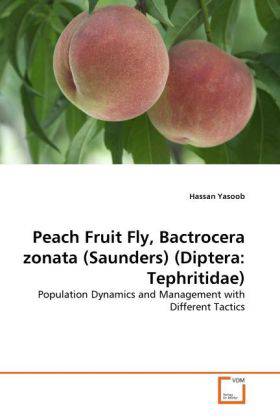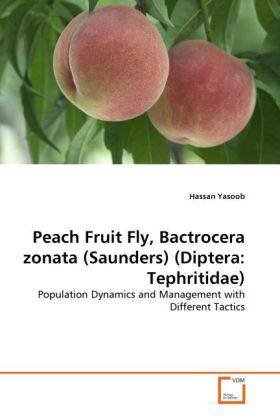
- Afhalen na 1 uur in een winkel met voorraad
- Gratis thuislevering in België vanaf € 30
- Ruim aanbod met 7 miljoen producten
- Afhalen na 1 uur in een winkel met voorraad
- Gratis thuislevering in België vanaf € 30
- Ruim aanbod met 7 miljoen producten
Zoeken
Peach Fruit Fly, Bactrocera zonata (Saunders) (Diptera: Tephritidae)
Population Dynamics and Management with Different Tactics
Hassan Yasoob, Hafiz Azhar Ali Khan
Paperback | Engels
€ 71,45
+ 142 punten
Omschrijving
Fruit flies (Diptera: Tephritidae) rank amongst the most destructive pests of horticultural crops and are well established through out the world including Pakistan. They cause direct losses to fruits and vegetables in tropical, subtropical and temperate regions of the world and indirect losses by enhancing expenses on chemicals which ultimately reduce the market value of the product. Peach (Prunus persica L.), a self-pollinated crop, is a member of the family Rosaceae and ranks as the third most agronomically important plant family in temperate regions of the world. Peach fruit fly (Bactrocera zonata) (Saunders) (Diptera: Tephritidae), is the most severe pest of P. persica in India and Pakistan, resulting in significant decrease in its yield. This book focuses on the population dynamics and different management tactics for peach fruit fly.
Specificaties
Betrokkenen
- Auteur(s):
- Uitgeverij:
Inhoud
- Aantal bladzijden:
- 100
- Taal:
- Engels
Eigenschappen
- Productcode (EAN):
- 9783639344318
- Verschijningsdatum:
- 28/04/2011
- Uitvoering:
- Paperback
- Afmetingen:
- 152 mm x 229 mm
- Gewicht:
- 159 g

Alleen bij Standaard Boekhandel
+ 142 punten op je klantenkaart van Standaard Boekhandel
Beoordelingen
We publiceren alleen reviews die voldoen aan de voorwaarden voor reviews. Bekijk onze voorwaarden voor reviews.








